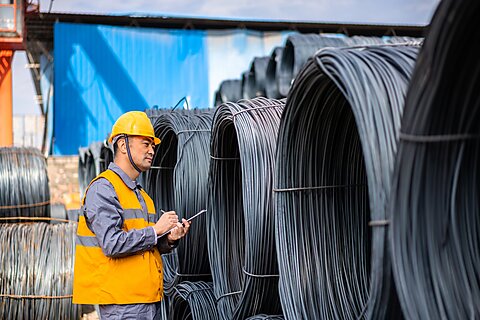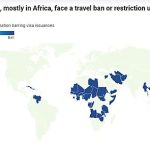
Clark Packard, Scott Lincicome, and Alfredo Carrillo Obregon
Earlier today, the White House called on the US Trade Representative to “consider” tripling the existing Section 301 tariffs on Chinese steel. The administration says the tariffs are necessary because China unfairly subsidizes its high‐emissions steel producers, which undercuts cleaner American steel producers and workers. Yet closer examination reveals the move to be far more about politics than unfair practices (despite the administration’s assertions to the contrary).
It is true that China subsidizes its domestic steel industry, but very little of that steel ends up in the United States due to our aggressive use of tariffs, i.e., more than five dozen trade remedies (antidumping and countervailing duties) measures, the Trump‐Biden “national security” tariffs on most steel and aluminum imports, and the Section 301 tariffs on a wide range of Chinese imports. As Bloomberg notes, thanks to these measures China “accounted for just 600,000 metric tons of steel imports in 2023, […] out of a total US steel imports of 25.6 million tons”—or a mere 2.3 percent of all steel imported into the United States last year.
As shown in Figure 1, steel imports from China have declined substantially since 2014 as various tariffs proliferated.
Yet even this tiny import share overstates the role of Chinese steel in the US market. Per the Financial Times, they’re only “0.6 percent of total US steel demand.”
In one sense, this is good news: because old US protectionism has effectively rid the market of Chinese steel imports, any new tariffs will have little economic effect. On the other hand, this means that—as the FT’s Alan Beattie notes—new tariffs also won’t benefit the domestic steel industry as Biden claims. It’s just political pandering all the way down.
Furthermore, it’s a reminder that, by restricting Chinese and other metals imports, US tariffs imposed during the Trump and Biden years have and continue to hurt the US economy—harms detailed in a new essay from the Tax Foundation’s Erica York as part of our ongoing Defending Globalization project. As she documents, US metals tariffs not only mean higher prices for American manufacturers and, eventually, American consumers, but also reduced investment, exports, and economic growth—and heightened cronyism and political dysfunction along the way.
At one point, Joe Biden understood all of this.
In 2019, during an early speech in his presidential campaign, then‐candidate Biden told an audience at the City University of New York, “President Trump may think he’s being tough on China. All that he’s delivered as a consequence of that is American farmers, manufacturers, and consumers losing and paying more. […] His economic decision‐making is so shortsighted and as shortsighted as the rest of his foreign policy.” He was right of course, as Cato trade analysts have argued repeatedly over the years.
Yet once in office, President Biden maintained (and defended in court) virtually all of the tariffs he inherited from the Trump administration. As York noted on X (formerly Twitter), more trade war duties have been collected under the Biden administration than the Trump administration. As bad if not worse, Biden’s active defense of Trump‐era tariffs has, as Scott Lincicome explained in a recent column, made it more likely that former President Trump will be able to impose the devastating 10 percent tariff on all imports and 60 percent tariff on all Chinese imports that he’s been promising on the campaign trail. Both are uncomfortable truths for a Biden campaign that intends to attack Trump’s tariff proposals as harming American consumers and the economy.
In its most recent polling of the public’s attitudes toward trade, Gallup found that more than 60 percent of Americans see foreign trade as an opportunity versus just 35 percent who view it as a threat. Despite this, the two candidates are vying to be seen by voters as the more protectionist in the race—regardless of the underlying facts or economics.
Voters can thus expect a heavy dose of protectionist rhetoric in the coming months from the Biden and Trump camps, which is one reason why Cato launched its Defending Globalization project last fall—to combat protectionist myths with fact‐based, sober analysis.








